At a glance
How to choose the best sunscreen for your face? Daily sunscreen vs beach & sports sunscreens: what is the difference? Anti-UVA and anti-UVB protection, explained.
I mentioned it many times, daily sun protection is definitely the most effective anti-ageing prevention step in your skincare routine! But how do you choose the right sunscreen product according to your protection needs? Should you use the same sunscreen all year round, or is it better to have several products that you can alternate according to the situation? I’ll give you answers to these questions in this guide!
Do I need to repeat it (probably lol), if you are concerned about your skin aging, sun protection is crucial every day, all year round!
UV rays, those sneaky little guys, are present every day of the year, in all climates (in Dubai or in Canada), even in the shade (thanks to the reverberation!), even indoors (UVA rays pass through most windows) and they produce a large amount of free radicals.
Harmful for the body, free radicals are responsible for various cellular dysfunctions (which can in the most serious cases lead to skin cancer) and also premature skin aging.
When people don’t protect themselves against UV rays, they are more likely to see wrinkles and spots appearing more quickly on their skin.
But should you protect yourself in the same way every day of the year? Do you need the same protection when you go to the office or to the beach? What are the criteria for a good daily sunscreen? And what are the criteria for a good beach & sports sunscreen? And above all, how do you choose the sun protection best suited to your needs?
We going to go over all these questions today!
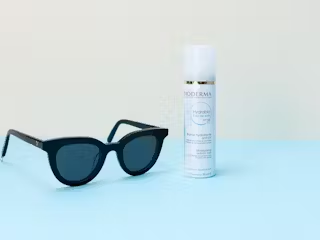 SkincareSun protection: Q&A and common myths
Even if sun protection is relevant all year long, I definitely feel this topic interests more people at the moment, with summer just around the corner…
Read more
SkincareSun protection: Q&A and common myths
Even if sun protection is relevant all year long, I definitely feel this topic interests more people at the moment, with summer just around the corner…
Read more
How to choose the best protection?
It may seem obvious to you, but it’s good to remember that the most important aspect to look for when you are choosing your sunscreen is its protection!
Well, OK Bonnie, thank you very much, captain obvious. But actually, if I emphasize this point, it’s because it’ not as obvious as it sounds!
Because as you’ll see, the protection value on your sunscreen doesn’t necessarily tell you everything you need to know…
So let’s start by figuring out what you’re protecting yourself against and why. And then let’s see how this protection is measured.
Reminder, what are UV rays?
I’ve already covered the matter in my comprehensive article about sun protection, but a little reminder is always good! 🙂
Let’s talk about UV rays, which is what your sunscreen protects you against!
For starters, where do they come from?
UV rays are sent to Earth by the Sun. There are 3 types of UV rays: UVA, UVB and UVC. Since the latter are stopped by the ozone layer, let’s take a closer look at the other two categories of rays and their effects on the skin.
UVA represents 95% of the UV light that reaches the Earth’s surface. They are the ones that make the skin age faster (mnemonic trick: UVA, with an A as in Age). They can penetrate the deep layers of the skin. UVA rays are partly responsible for the signs of aging such as wrinkles, loss of skin firmness, caused by the degradation of the skin’s collagen. They can also cause skin cancer. They are present all day long, during all seasons (yes, even in winter) and they pass through windows.
UVB represents 5% of UV radiation and it is the sun’s rays that burn (UVB, with a B for Burn). These go into the superficial layers of the skin. They cause tanning, sunburn, and can also cause skin cancer. They also promote premature aging of the skin. They are mainly present during hours of intense sunlight. UVB rays are blocked by windows but not by clouds.
Sun protection factor and other labeling:
Likewise, I’ve already covered this in my article about sun protection, but perhaps I can complete it here!
When selecting your sunscreen, you should look at two factors, which tell you how much protection it gives you against UVB and UVA rays.
The first one is the most well known, the SPF, which tells you how much protection you get against UVB rays.
The SPF (or Sun Protective Factor):
The SPF is a measure of the level of protection against UVB rays. Sun protection products are classified into 4 levels of SPF:
| Intensity of UVB protection: | SPF index: |
| Low UVB protection | SPF 6 to 10 |
| Average UVB protection | SPF 15 to 25 |
| High UVB protection | SPF 30 to 50 |
| Very high UVB protection | SPF 50+ (that actually equals an index of 60 or higher) |
For UVA protection, it’s much more complicated because there are several ways to measure it. And the indexes used are unfortunately not standardized worldwide.
Here are two examples of UVA protection indexes that are quite commonly used in Europe and Asia:
The PPD:
The PPD is a measure of the level of protection against UVA (PPD for “persistent pigment darkening”). When it is mentioned on sunscreen products (this is still too rare), you will find it next to the UVA symbol.
The PPD index ranges from 2 to 50.
The PA:
The PA is a Japanese classification system that measures the protection grade of UVA rays. It is widely used in Asian countries, especially in Korea.
The PA index is rated with +, which ranges from 1 to 4 + (+, ++, +++ or ++++). The higher the PA, the stronger the protection against UVA.
The PA system simplifies and groups the scores of a PPD test:
| Intensity of UVA protection: | PA: | PPD: |
| Very low UVA protection | PA + | 2 to less than 4 |
| Low UVA protection | PA ++ | 4 to less than 8 |
| Average UVA protection | PA +++ | 8 to less than 16 |
| High UVA protection | PA ++++ | 16 and higher |
The downside with this measure is that for high PPD values, it’s not very accurate. For example, two different sunscreens with a PPD of 20 and a PPD of 50 are both categorized as PA++++, and there is no way of knowing which one offers the highest protection (unless the brand communicates that information).
And very few brands communicate this PPD measure. Even when asked, they generally refuse to disclose the information (I don’t understand at all why, by the way, if someone knows the reason behind this secrecy, please feel free to enlighten me).
The only imperative (only for Europe) in European legislation is that the protection against UVA is at least equivalent to a third of protection against UVB.
So for example, with a European sunscreen, if you buy a sunscreen product with a SPF50, you know that its protection against UVA will be at least 17, which is a high level of protection.
Another example, a sunscreen sold in Europe, with SPF30 will have UVA protection of at least 10. So when I hear that a sunscreen SPF30 offers almost the same protection as a SPF50 sunscreen (without saying which UVs they are referring to), I always want to say that it depends which protection we’re talking about! If the topic is UVA rays, as we’ve just seen, it still makes a big difference!
Ideally, a sunscreen product that is effective against both UVA and UVB rays should have both measurements on its packaging: SPF and PA/ PPD (in short, companies should indicate which protection against UVA they are providing, not just UVB). It’s not a legal obligation in Europe to mention the UVA protection index, nor in the United States. On the other hand, it’s rather common in Asia.
So, which protection is better?
As you know, I’m very concerned about anti-aging prevention and it’s clearly my main motivation to use sunscreen on my face each and every day of the year (and I imagine that if you’re here reading, your motivation is probably quite similar to mine 😉 ).
UV rays are always around, even in winter, and even indoors…
So my objective is to have a good anti-UVA protection since these rays are the ones that make you age the most! Generally speaking, this protection often goes with a rather strong anti-UVB protection as well.
So ideally, I therefore choose a minimum SPF of 30 as well as a high PA (3 or 4 +). But I confess that if I can, I will always prefer a SPF50 PA++++ sunscreen.
Since my primary goal is anti-aging prevention, the fact that I’m outside somewhere with a lot of sun or at home indoors doesn’t change much in my choice of protection. I prefer the strongest in all cases, since very often a strong UVB protection means that the anti-UVA protection will be strong too (and I remind you that UVA rays pass through the windows 😉 ).
Important to remember:
UV rays are always around, even in winter, and even indoors (at least if you have windows). Regarding skin ageing, they are harmful for all skin phototypes (even darker skin tones).
So if your goal is anti-ageing prevention, whatever the situation (sunny weather or not, summer or winter), you should not choose a SPF lower than 30.
On the other hand, it’s true that depending on the situation, there are different kinds of sunscreens that are more or less appropriate. We’re lucky. Nowadays, we have more and more options, and the available textures are much more sophisticated than they were a few years ago!
Personally, I don’t use the same sunscreen depending on whether I’m at home all day, if I have to put makeup on or if I’m at the beach or hiking in the mountains…
Indeed, there is a difference between “daily sunscreens” and “beach & sports sunscreens“.
Daily sunscreens and beach & sports sunscreens:
I think you get the idea!
Basically, “daily sunscreens” are comfortable enough to be used every day, they also work well with makeup for most of them, and are not irritating. Their motto: comfort!
You choose them according to your skin type (they are more or less moisturizing), and their finish (matte or glowy). Clearly, it’s a plus if they don’t leave a white cast!
The “beach & sports sunscreens” are designed to be used where there is more sun exposure or when you want to go swimming (or do some sweaty physical activities). Here, resistance is what counts!
As mentioned above, both can be very protective, but a beach & sports sunscreens is usually more waterproof than the sunscreen you use everyday. Which means that they are also harder to remove. Remember that when you do your evening skincare routine! Clearly, double cleansing is mandatory here (more info in my article about face cleansing).
Personally, I think it’s interesting to have both in your bathroom. Well clearly, when I go on vacation, I only bring my beach & sports sunscreen with me to avoid weighing down my suitcase!
But in general, the formulas of the beach & sports sunscreen are not really designed for daily use, you can feel it. The textures are usually a bit greasier, thicker and I tend to find them more irritating as well, especially after a few days of use in a row.
With this article already being quite long, I won’t go back over the necessary quantity to use (= a lot!) and the need to reapply sunscreen when you are exposed. I’ve already discussed it in this article if you’re interested:
Sun protection, Q&A and common myths
A few product examples:
I’ll stick to products I’ve already mentioned in my face sunscreen guide articles (2018 and 2019). I’m still testing some new releases for my next sunscreen guide 2020 that I will probably write about in a few weeks 😉
Daily sunscreens:
In this category, it’s hard to beat the Korean sunscreens. I really feel that in Korea, sunscreens are seen as an everyday product, and that beauty consumers are very demanding about this category of skincare products! The textures are just unrivalled and they are getting better every year (spoiler alert: it’s very possible that my sunscreen guide 2020 will be 90% made up of Korean ones 😉 ).
They are super comfortable to wear, don’t irritate my skin, don’t feel greasy and play well with makeup!
I already detailed them in my previous articles, I invite you to read them if you want a more complete description!
: a super comfortable and mattifying mineral sunscreen (great for summer if you have combination skin like me). Fragrance-free and alcohol-free, it’s also ideal for sensitive skin.
(I love the latest fragrance-free version, I’ll tell you more about it in my next article!)
and the because they’re both super pleasant to use, and they have nice formulas with good skincare ingredients. They’re great moisturizers, and they’re perfect if you have dry or dehydrated skin!
EDIT 1/23/2021:
Please be aware that these two sunscreens (Purito and Klairs) have been discontinued due to concerns about their actual SPF value.
Beach & sports sunscreens:
In this category, I often prefer European sunscreens because, as I explained above, I’m sure that the anti-UVA and anti-UVB protection are very high. On the other hand, they’re generally designed with the idea of being used during summer holidays and are generally quite waterproof.
But for good measure, I also included my favorite Japanese sunscreen which is a very waterproof product but which is also very pleasant to wear everyday (Japanese sunscreens are quite amazing!).
One of my favorites, the : very protective (its PPD is 46, that’s a lot!), it’s quite cosmetically elegant, and it’s waterproof. In Europe and the Middle East, it’s easy to find and not very expensive, on top of that. Theoretically, it could be used every day, but since it contains a lot of alcohol, I find it a bit drying after a few days. That’s why I prefer to use it on days when I know I’m going to need a stronger protection.
And a cult Japanese sunscreen, the : moisturizing, suitable for sensitive skin, very waterproof and sweat resistant, it’s also very pleasant to wear every day. It works very well with makeup and its white cast is minimal. You could totally use it every day and it wouldn’t be a problem. But it still has a few issues: it’s not easy to find (even online) and it’s not cheap! Because it’s quite long lasting, it’s also difficult to remove. A good cleansing oil and double cleansing are definitely mandatory with this product!
In conclusion:
I know that for many people, applying a sunscreen every day is not yet a habit. So having two, which you can alternate depending on the situation, might seem a bit over the top!
But then again, I think it really depends on each individual’s beauty culture. In Korea, for example, they even have winter and summer sunscreens, with more or less light textures to match the weather.
Clearly, if you are concerned about anti-ageing prevention, I would strongly advise you to follow the example of our wise friends in the land of the morning calm when it comes to sun protection. If you’ve ever watched a K-Drama, you know what I’m talking about, just look at the actors’ opalescent skin to understand that they know what they’re doing regarding skincare 🤩🤩🤩
I will have the opportunity to introduce you to my new sunscreen discoveries this year, a few weeks from now, in a upcoming post. Stay tuned 😉
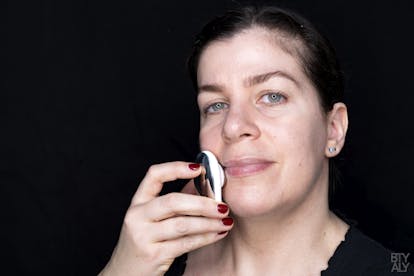
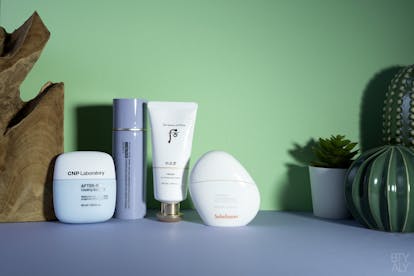


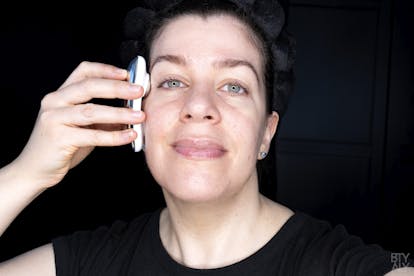

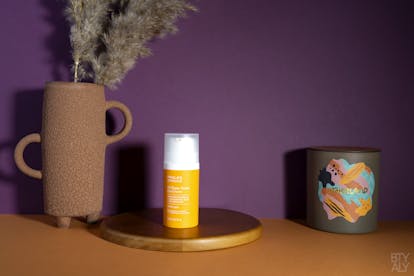
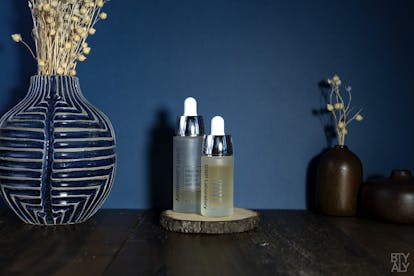
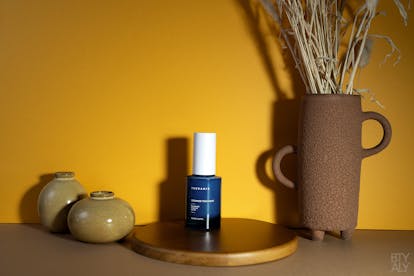
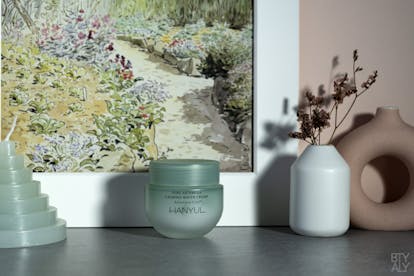

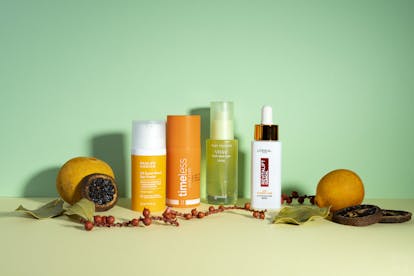

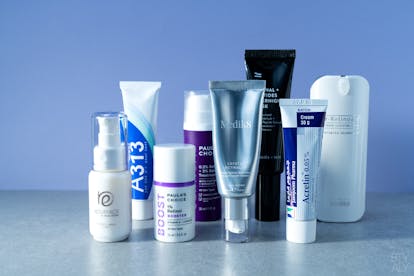
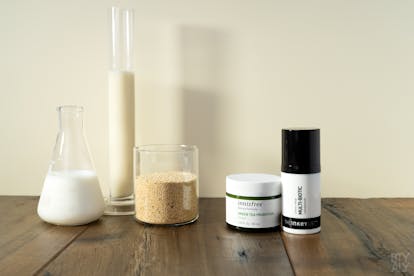
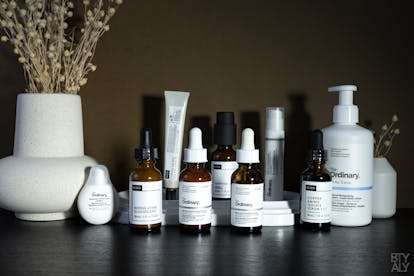
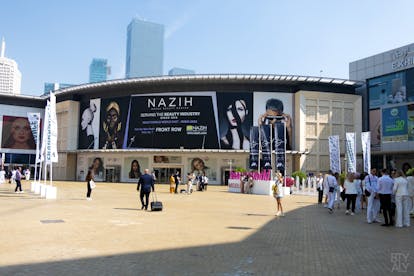
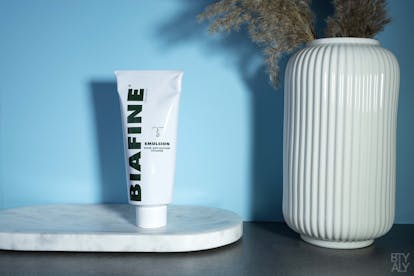

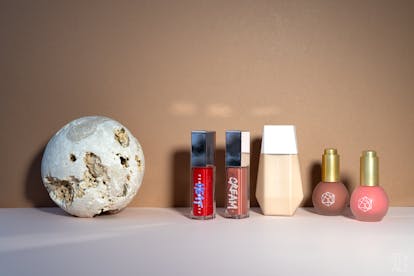
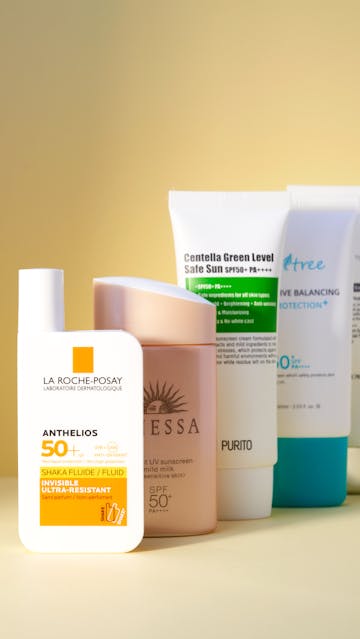

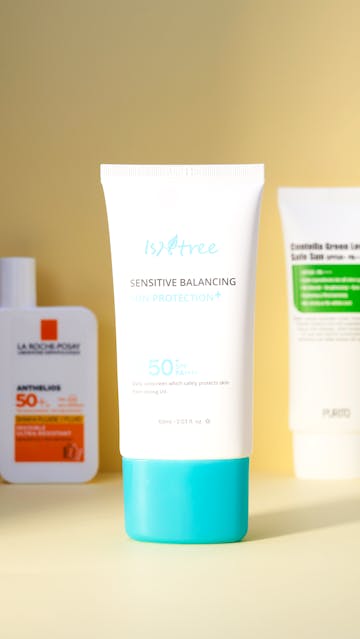
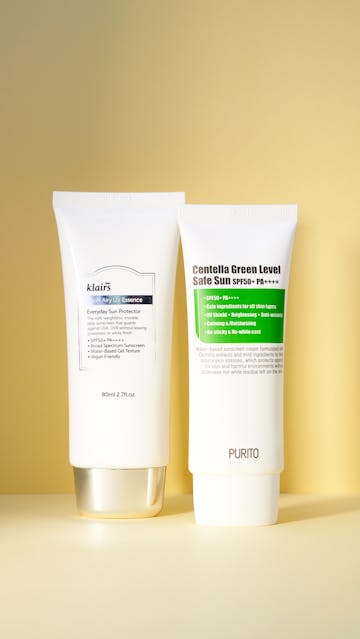
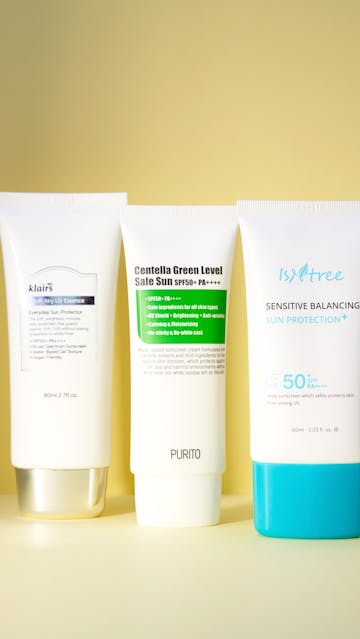



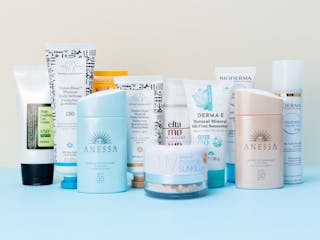
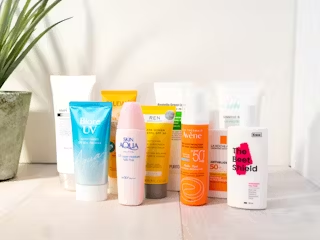
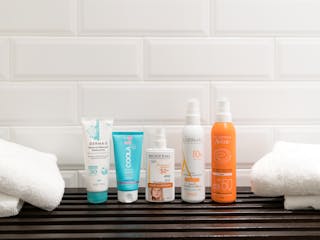
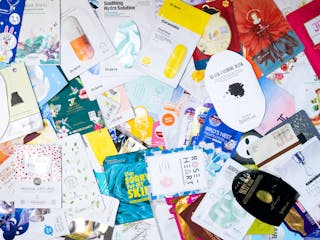
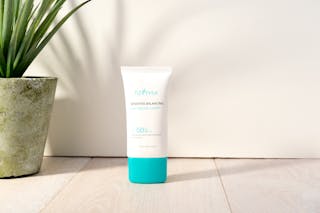

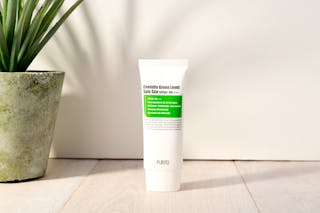
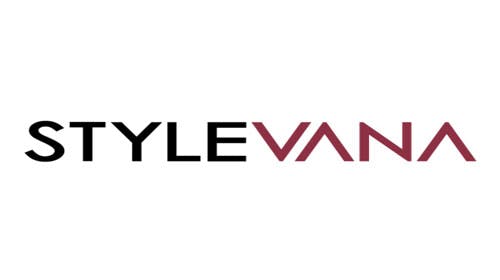




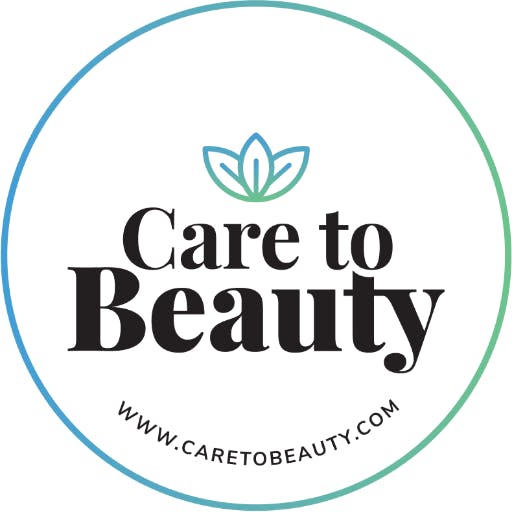
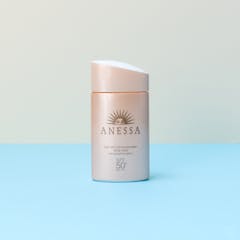











Merci Bonnie ❤️
Il est bon d’entendre que le port d’un spf est obligatoire.Je ne pourrai point compléter mon sac de spf car l’instree et anessa laissent un film blanc.
Wow great article Ms Bonnie! Greetings from Indonesia! I’m female of 37yo. I’m too late starting skincare but at least I’m trying 🙂 I find your blog is really helpful! I follow ur IG as well…. halfway to finish reading your writings 🙂 lots of love from me
Hi Nisye! 😀
Thank you so much for your lovely comment!
You know, it’s never too late to start taking good care of your skin! You will definitely see good results, I can guarantee that 😀
Another great article. Thanks. Bonnie.
Thank you so much, Stephanie! 😀
Hi, Thanks for much for this. I just read your review of Maelove’s Glow-Maker and have a question about it with sunscreen. I use the Anthelios 50 every day (French version, though I’m in the USA); I started using Glow-maker under it last year. I’m worried that I’m preventing the chemical filters from absorbing by using the Glow-maker first. Do you have any insight on this? Thanks in advance for such a great site!
Hi Nicole and thank you very much for your lovely words!
Actually, using a vitamine C serum before your sunscreen is a great idea! There’s scientific data saying that using vitamin C/ L-ascorbic acid boosts the protective effect of sunscreen filters (any filters, chemical or mineral)!
So it’s a match made in heaven 😉 👍
Hi Bonnie, greetings from Scotland! Thanks so much for this article and all of your detailed pieces, seems like you’re a major guru in this space! Really helpful place to start with sunscreens and build up knowledge – I’ve just started my sunscreen journey (27 years old, feels a bit like I’m a wee bit late to the party!) and plan to go through lots of your articles to build up my sunscreen knowledge and routine this summer, really looking forward to trying your recommendations from your 2021 sunscreen guides 🙂
Thank you very much for your kind words Lucy 🥰🥰🥰 I’m glad my art was useful! 😁👍
Have used Ultrasun spf50 for years. Now I am questioning if it has harmful ingredients. I can’t find an answer. I noticed you don’t include ultrasun????
Hi!
I tried one of their sunscreens last year but the texture was too rich for my liking. I still think it’s an excellent brand and I don’t think they contain harmful ingredients at all 😊